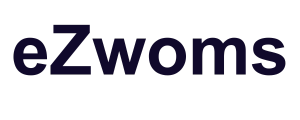
Top 5 Tips for Creating Client Intake Forms for Web Design Projects
Launching a successful web design project begins with a thorough understanding of the client’s needs, preferences, and goals. A well-designed client onboarding form is the key to gathering essential information efficiently and setting the stage for a smooth collaboration. Here are the top 5 tips for creating effective client onboarding forms tailored specifically for web design projects:
Tip 1: Focus on Clarity and Simplicity
Keep your onboarding form clear, concise, and easy to navigate. Avoid overwhelming clients with lengthy paragraphs or unnecessary questions. Break down the form into logical sections, such as business information, design preferences, and technical requirements, to streamline the process and make it more manageable for clients to complete.
Tip 2: Ask Targeted Questions
Ask targeted questions that are specific to web design to gather relevant information from clients. Inquire about their branding guidelines, desired website functionalities, preferred color schemes, and examples of websites they admire. Tailoring your questions to the unique needs of web design projects ensures that you gather actionable insights that guide the design process effectively.
Tip 3: Provide Visual Examples and Instructions
Visual examples and instructions can help clients understand the type of information you’re seeking and provide clarity on how to complete the form. Include screenshots or links to sample websites, design inspiration boards, or mood boards to illustrate different design elements. Additionally, provide clear instructions or tooltips where necessary to guide clients through the form and ensure accurate responses.
Tip 4: Offer Flexibility and Customization Options
Give clients the flexibility to customize their responses and express their unique preferences. Offer open-ended questions where appropriate, allowing clients to provide additional details or specific requests related to their project. Providing customization options demonstrates your commitment to meeting the client’s individual needs and fosters a sense of collaboration and ownership in the design process.
Tip 5: Incorporate Feedback Loops
Create opportunities for feedback throughout the onboarding process to ensure that clients feel heard and valued. Include optional feedback sections at the end of each form section or provide a dedicated space for clients to share any concerns or suggestions. Actively listen to client feedback and use it to refine your onboarding process and improve the overall client experience.
FAQs About Client Intake Forms for Web Design Projects
Q: How long should a client onboarding form be?
A: The length of the onboarding form should strike a balance between gathering essential information and respecting the client’s time. Aim for a concise form that covers all necessary aspects of the project without overwhelming the client with unnecessary questions.
Q: Can I customize the onboarding form for different types of web design projects?
A: Yes, absolutely! Tailoring the onboarding form to the specific needs and goals of each web design project ensures that you gather relevant information and set appropriate expectations from the outset. Consider creating separate forms for different types of projects, such as e-commerce websites, portfolio websites, or informational websites.
Q: How often should I update the onboarding form?
A: It’s a good practice to review and update the onboarding form periodically to reflect changes in your design process, client feedback, or industry trends. Solicit feedback from clients on the effectiveness of the form and use their input to make necessary improvements and optimizations.
By implementing these top 5 tips and addressing common questions and concerns, you can create client onboarding forms that effectively gather essential information, streamline the design process, and lay the groundwork for a successful web design project.
Conclusion
Crafting an effective client onboarding form is essential for laying the groundwork for a successful web design project. By following the top 5 tips outlined in this article—focusing on clarity and simplicity, asking targeted questions, providing visual examples and instructions, offering flexibility and customization options, and incorporating feedback loops—you can streamline the onboarding process and ensure that you gather essential information to guide the design process effectively.
Remember, the goal of the onboarding form is not only to collect data but also to foster clear communication, align expectations, and build trust between you and your clients. By implementing best practices in form design and content, you can create a positive experience for your clients from the very beginning of the project, setting the stage for a successful collaboration and a stunning final product.
So, take the time to invest in crafting a well-designed onboarding form tailored to the unique needs of each web design project. By doing so, you’ll not only streamline your workflow but also set yourself up for success in delivering exceptional results that exceed your client’s expectations.
